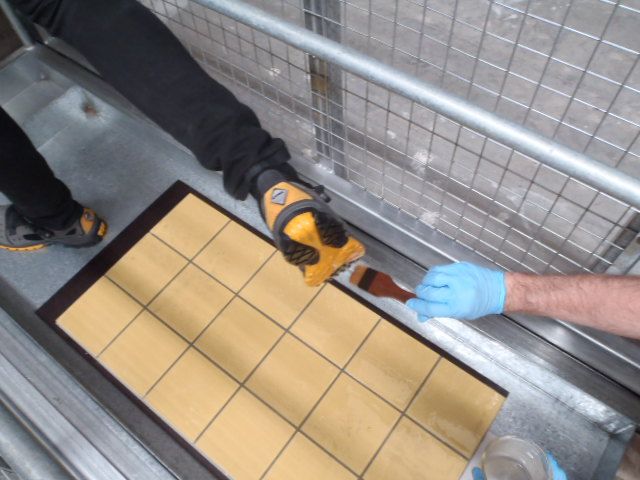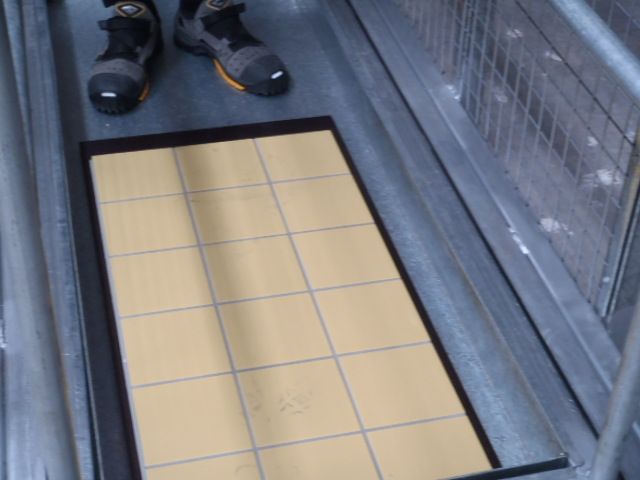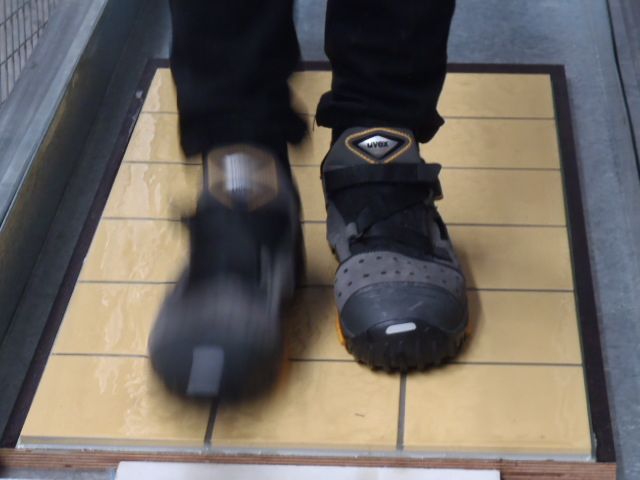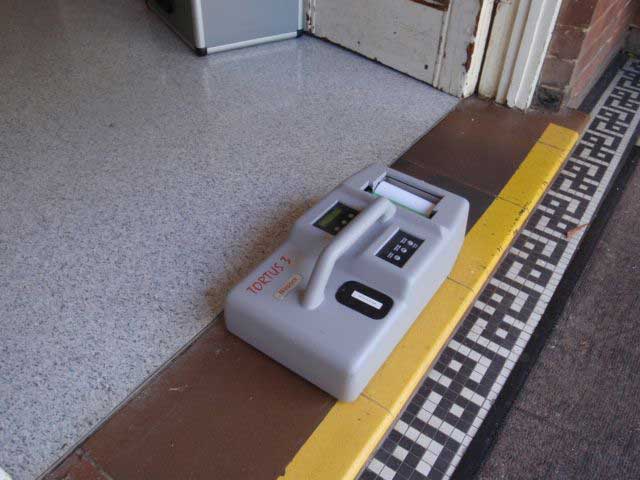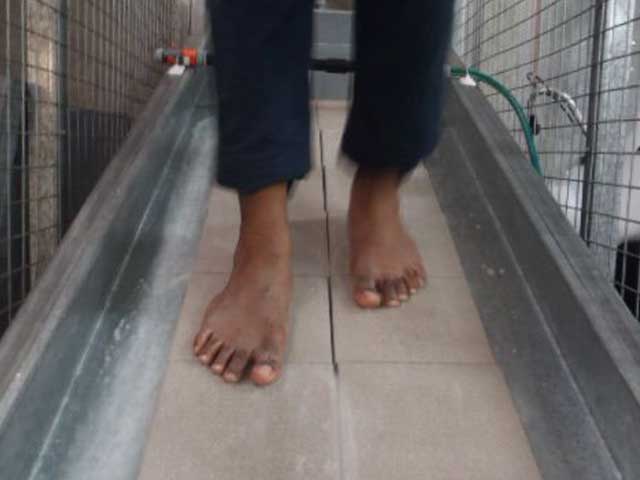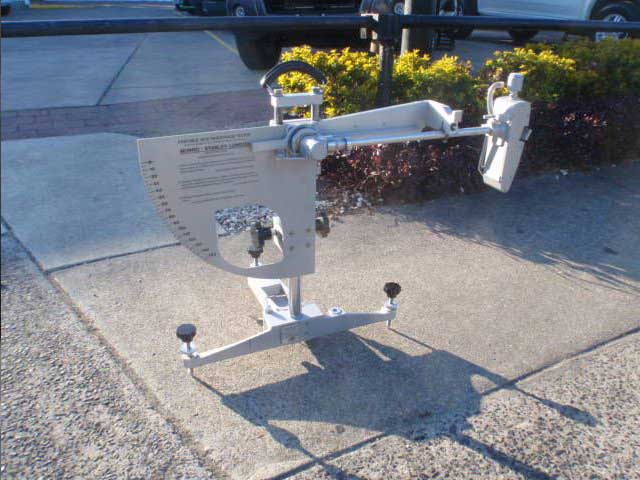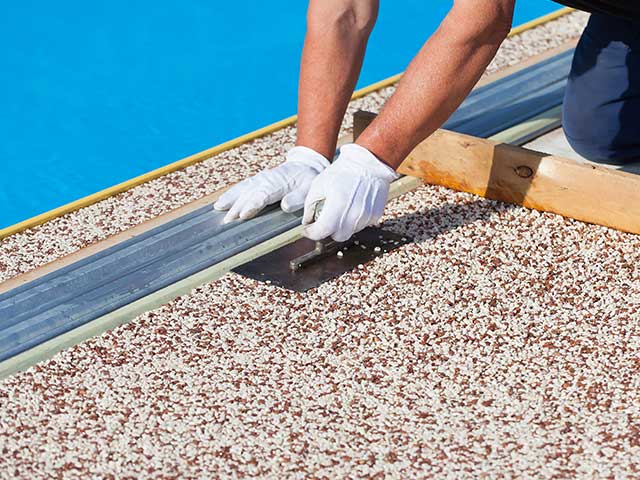The oil wet ramp test is the test that provides us with ramp ratings, otherwise known as the R rating or classification. The R rating of floor surfaces is one of the most commonly used industry terms that people associate with the slip resistance of flooring.
The most common test method that floor surfaces are test to fro the ramp test is AS 4586-2013 Sip resistance classification of new pedestrian surface materials Appendix D: Oil Wet Inclining Platform Test. This has previously been described as the ramp testing in the 1999 and 2004 versions of AS/NZS 4586 Appendix D. The difference being an attempt of the misnomer that the test is not for determining the slip resistance of a ramp, merely the inclining ramp or platform being a way to classify and discriminate between different levels of slip resistance. This being, the more slip resistant a surface is the higher the angle at which a person can walk. Similar, if a ramp or inclining platform test has a result of 10 degrees, this does not mean that it is safe to walk at that angle.
The ramp slip test was first standardised in Germany in DIN 51 130 with Australia having followed suit in harmonising this test as one of a range of defacto European / International norms.
If you feel confused already about the ramp slip test, read on to understand in more detail……
How is the oil wet ramp test conducted ?
A torsion resistant platform is used to place the floor panel for testing whereby two test personnel walk backwards and forwards up and down the ramp until which they find the point of slip. The people walking on the ramp are set up in a hardness in the case of a fall and the gradient of the floor is increased. There is a specific walking pace when walking and the testing personnel must face down whilst keeping an upright posture.
The testing personnel increase the gradient of the ramp at small incremental points and walk up and down the ramp twice at the same angel before the gradient or slope of the ramp is then increased again. This method is repeated until the testing personnel slip, in which case they must walk on the ramp again at the same angle and confirm that there as an actual slip; otherwise the ramp is then increased by another small incremental amount. This is how the oil wet ramp slip test is conducted.
The wrong shoes grommet !
If you can remember the animation series Wallace and Grommet, you may remember the show; however, over the years there have been many changes with this slip resistance test, namely the shoes to assess the r rating.
Firstly, through to explain more about the actual slip testing protocol, oil is brushed onto the shoes along with the test panels. The specified amount of oil assist consistency in the level of oil that may be over the surface, which may affect the ramp testing results. The shoes are of a specific brand, being Uvex, which have a specific rubber hardness of around 72 IRHD (or shore A) and a specific tread pattern. The tread pattern assists to measure consistently the amount of mechanical interlock, which can affect the overall ramp rating.
Over the years there have been three different types of shoes which have been incorporated into the Australian ramp slip testing method, being Lupos, Bottrop and now the Uvex. Each change in test shoes being as a result of production being stopped. This may affect differences in the results, however testing undertaken by our Principal Materials Scientist, Carl Strautins had shown that there was insignificant difference in the oil wet ramp test results between footwear. This was shown through a paper co author with Richard Bowman whilst at CSIRO. At the time of writing there are plans to determine the differences with the Uvex boots. It should e noted that it is likely that any changes will be to be in favour of the Uvex boots as to align more closely with the European norms.
Is there too much subjectivity during the ramp slip test ?
We often are asked “how scientific is this test… really???”
Whilst it appears as though there may be a huge amount of variability in this particular slip test at face value, there is relatively good reliability in the result when the test personnel have been trained properly. This includes coaching to ensure that the steps are within a specified rhythm, consistent short steps are taken, and the correct posture is maintained.
There are three calibration panels, which provide a correction factor for each of the two test personnel as each test person will have differing weight, height, body mass index, gait and the like. So essentially the people have their own calibration curve, which is set up each day of testing. The calibration tiles are ceramic tiles what have been specially made for the test. They are mostly of different profiles to assess the interlock of the upper surface of the substrate and the ability for oil and the like to escape into the profile. For more information of how the profile can aid in slip resistance, and in some cases work against slip resistance, refer to the page that discusses volumetric displacement in more detail.
All these factors assist to ensure that there is repeatability and consistency for a quality result. When assessing results, one should also ascertain as to whether the testing company is accredited by the National Association of Testing Authorities (NATA). The audit confirms that the independent slip testing service provider is technically competent and has a quality management system in place with measurements being traceable to a primary standard.
How does the oil wet ramp test provide the R Ratings ?
The oil wet ramp slip test provides r ratings starting at R9 being the lowest r rating, through to R13 being the most slip resistant R slip rating. Below six degrees there is no R rating or classification obtained. Between six and up to ten degrees the classification is R10, from ten to 18 degree R11, 18 to 27 R12 and over 27 degrees the highest slip resistance classification for floors is achieved being R13.
It is important to note that just because a report states say 10 degrees, it does not mean that it is safe to install a floor at 10 degrees. Always refer back to Standards Australia Handbook 197, An introductory guide to the slip resistance of pedestrian surface materials.
When is the oil wet ramp slip test the most appropriate to specify the slip resistance of floors?
The R ratings are most appropriate when specifying the slip resistance of floors where the floor will predominantly be covered in relatively high viscous oils and liquids where workers will be wearing profiled safety shoes. The ramp slip test is less relevant for situations where people are wearing normal day-to-day shoes where water is the likely contaminant. So, then floors such as workshops and commercial kitchens are best suited to the ramp rating.
Although it may be common practice, best practice is not to use the r slip rating for most public places where water contamination is expected. This general practice of specifying R ratings tends to come from the floor industry, particularly ceramic tiling who have traditionally had surfaces tested overseas by the manufacturers. The additional cost of having pendulum slip testing and the like being conducted is seen as a burden in many cases and reducing profits. As the r rating is common industry practice it is continued to be so, contrary to the advice of some experts.
Limitations with the ramp slip test
One of the main concerns with the ramp slip test is that once the floor is installed, it cannot be tested again to confirm any changes in slip resistance that may occur over time. This is known to occur and quite fast in some situations. Only the pendulum and dry floor friction tests can determine the onsite slip resistance.
The ramp slip test does have advantages over the pendulum and dry FFT for highly profiled surfaces where the impact energy of the pendulum may provide misleading results. This tends to be surface with a volumetric displacement of 4 cm3/dm2. In these instances, the R ratings provide further information to assess the adequacy of the slip resistance and should be used as an adjunct test. The dry FFT generally cannot be used on highly profiled surfaces due to the slider grapping and stopping the machine crawling access the floor completely. Modified ramp tests have also been conducted such as the Rapra CH0001, which uses slider 96 rubber on shoes with water flowing over, similar to the wet barefoot ramp slip resistance test.
We hope that this page has been helpful in understanding the ramp test and slip resistance ratings in general. Any feedback is greatly appreciated to keep these pages up to date and relevant as to the concerns that industry may have and information they you may require in relation to slip resistance testing and floor safety assessments.
For more information of ramp ratings and test tiles, stone vinyl and other flooring surfaces, please contact us at Slip Check to help guide you through the process.
Be absolutely assured. Safe Environments is NATA accredited for Noise testing
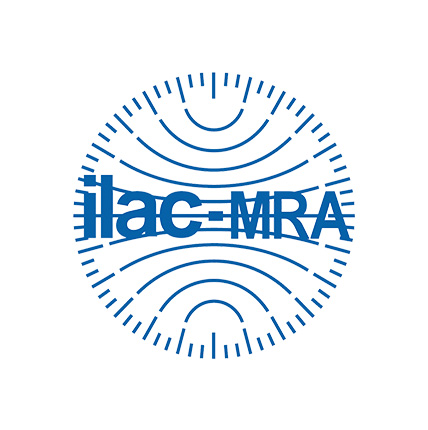
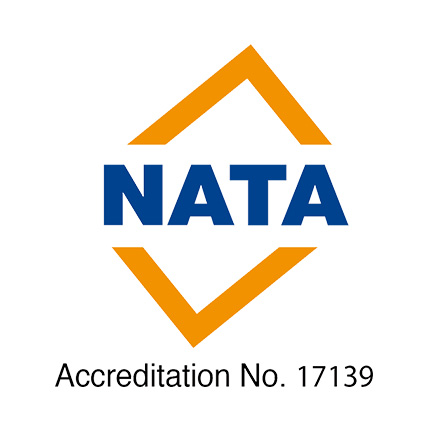
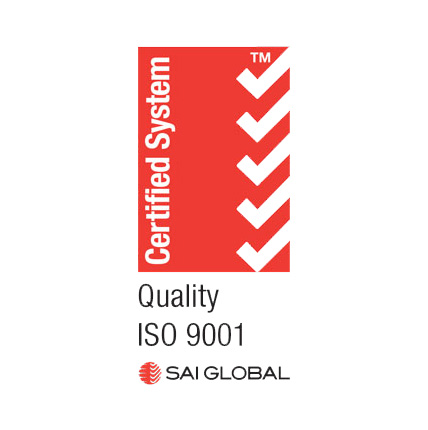
Ensure a Safe Environment
For more information on noise testing or management please contact one of Safe Environments Occupational Hygienists or Noise Consultants located in the following Australian cities:
Melbourne & Victoria
Unit 25, 1 Millers Rd Brooklyn VIC 3012 Australia
NSW - Sydney, Newcastle & Wollongong
Unit 4, 40 Bessemer Street, Blacktown NSW 2148
